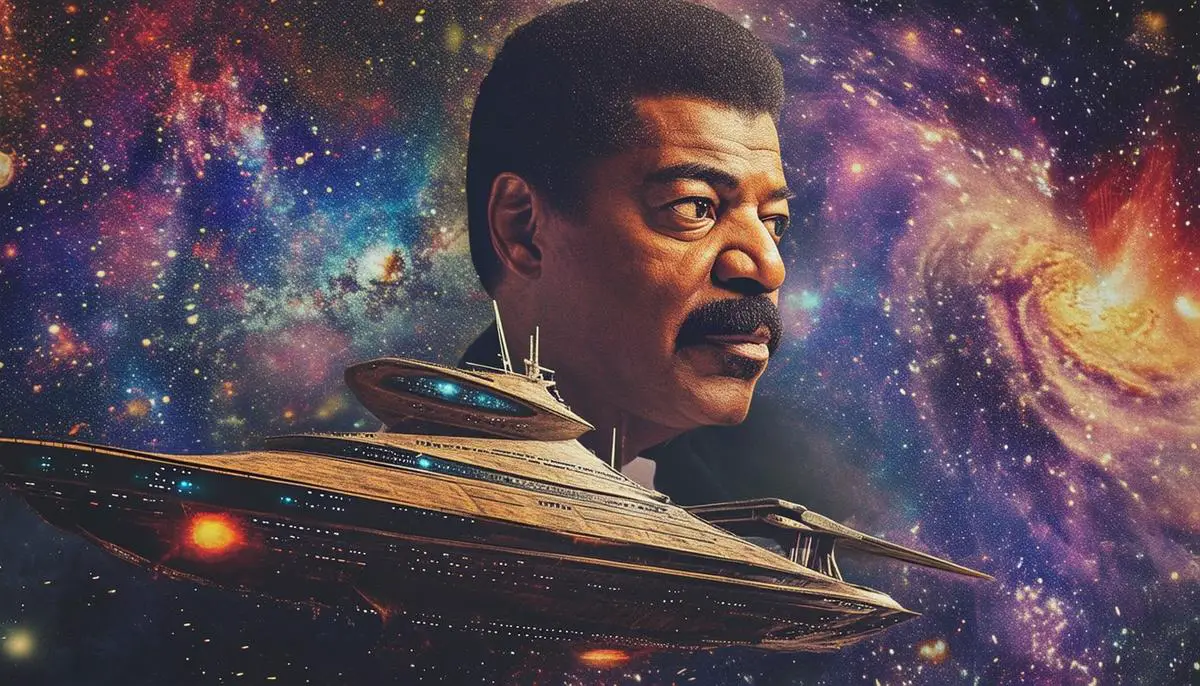Revival of Cosmos
Neil deGrasse Tyson's revival of Carl Sagan's classic TV series, 'Cosmos,' aptly titled 'Cosmos: A Spacetime Odyssey,' breathes new life into the beloved 1980s science television narrative. This series merges the vast knowledge accrued over the past four decades with the limitless bounds of computer-generated imagery.
Astronomer Ann Druyan, Carl Sagan's widow, serves not only as an executive producer but also co-writes the series, thus weaving a thread of authenticity and dedication through the fabric of this ambitious project.
Renowned for organizing complex cosmic phenomena into digestible, awe-inspiring spectacles, Tyson follows in Sagan's footsteps. This updated rendition of 'Cosmos' extends beyond our solar system to tackle intriguing cosmic phenomena, showcasing over a thousand newly discovered exoplanets and novel scientific insights that were not known during Carl Sagan's era.
Seth MacFarlane, known for his animation and comedy work, might seem an unlikely contributor, yet his involvement as an executive producer supports the series' outreach to broader audiences, stretching beyond typical science enthusiasts. His engagement also illustrates a key shift in the series' presentational style, ensuring compatibility with contemporary viewing habits while respecting its original intellectual essence.
The new 'Ship of Imagination,' an iconic conceptual vehicle from the original series, has been revamped. It allows Tyson to traverse astral planes, exploring both microscopic subatomic realms and colossal galactic structures. Visual effects in this iteration are strong. They challenge viewers' imaginations and expectations about what's feasible in visual storytelling, mirroring advancements in digital technology and astrophysics.
The Cosmic Calendar is re-introduced in a fascinating manner. It compacts the universe's 13.8 billion-year history into a single year, offering audiences a stark perspective on humanity's brief but impactful tenure in cosmic history. This Calendar not only educates but also situates human endeavors within a broader astronomical context.
Despite its grand scale, 'Cosmos: A Spacetime Odyssey' makes room for personal touches that ground the expansive subject matter. Neil deGrasse Tyson recounts his own experiences with Carl Sagan, notably a meeting that cemented his path in astrophysics, acting as a crucial beacon, passing the baton of cosmic curiosity from one generation to another.
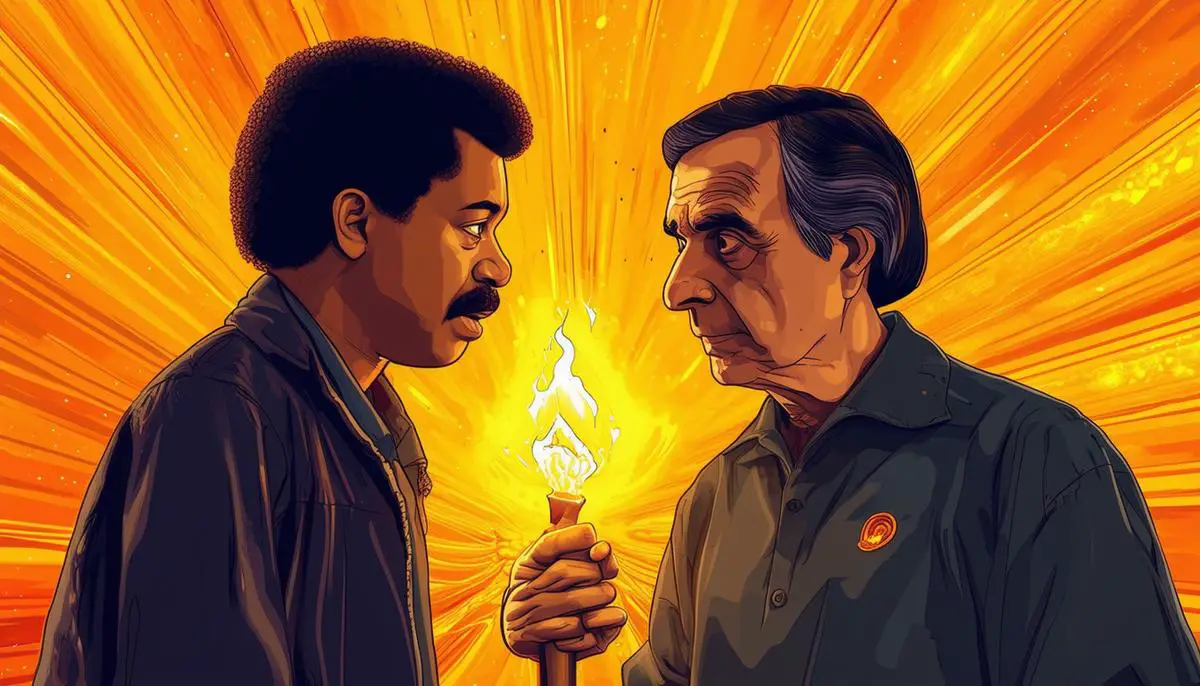
Scientific Updates and Visual Effects
In the contemporary interpretation of 'Cosmos: A Spacetime Odyssey,' the synthesis of cutting-edge scientific updates with advanced visual effects captures the audience's curiosity and deeply enhances the educational potency of the series. Since Carl Sagan's original conception in the 1980s, the field of astronomy has unearthed layers of cosmic mysteries—contextualizing these revelations, the series elegantly threads together four decades of astronomical evolutions, employing striking visual storytelling to anchor these complex ideas in viewers' cognition.
Among the galaxy of recent astronomical advancements highlighted, one of the most compelling is the discovery and characterization of exoplanets. 'Cosmos' converts this previously inconceivable idea into a visual spectacle that spans across diverse star systems, illustrating both the uniqueness and potential habitability of these newfound worlds.
Equally impressive is the graphical synthesis addressing the enigma of dark matter and dark energy—topics that have profoundly shifted our understanding of the universe since Sagan's time. The visual effects team vivifies these concepts as more than abstruse scientific phenomena, featuring dynamic simulations that provide a conceptual grasp of their influential roles in cosmic acceleration and structure formation.
Powerful CGI doesn't just illuminate abstract astronomical concepts; it also magnifies their relevance to everyday life. In episodes discussing cosmic phenomena like black holes and neutron stars, visually immersive experiences allow viewers to appreciate the formidable forces and extreme conditions that govern distant realms.
Interactive elements and multimedia integration further expand the experiential learning avenues. The Cosmic Calendar makes a welcome return with a fresh interface—intuitive and sleek—enabling viewers to manipulate this chronological representation of cosmic history. This facilitates a user-driven exploration of epochs, from the Big Bang to the advent of recognizable contemporary astronomy, propelling both engagement and retention of scientific truths across varied audience demographics.
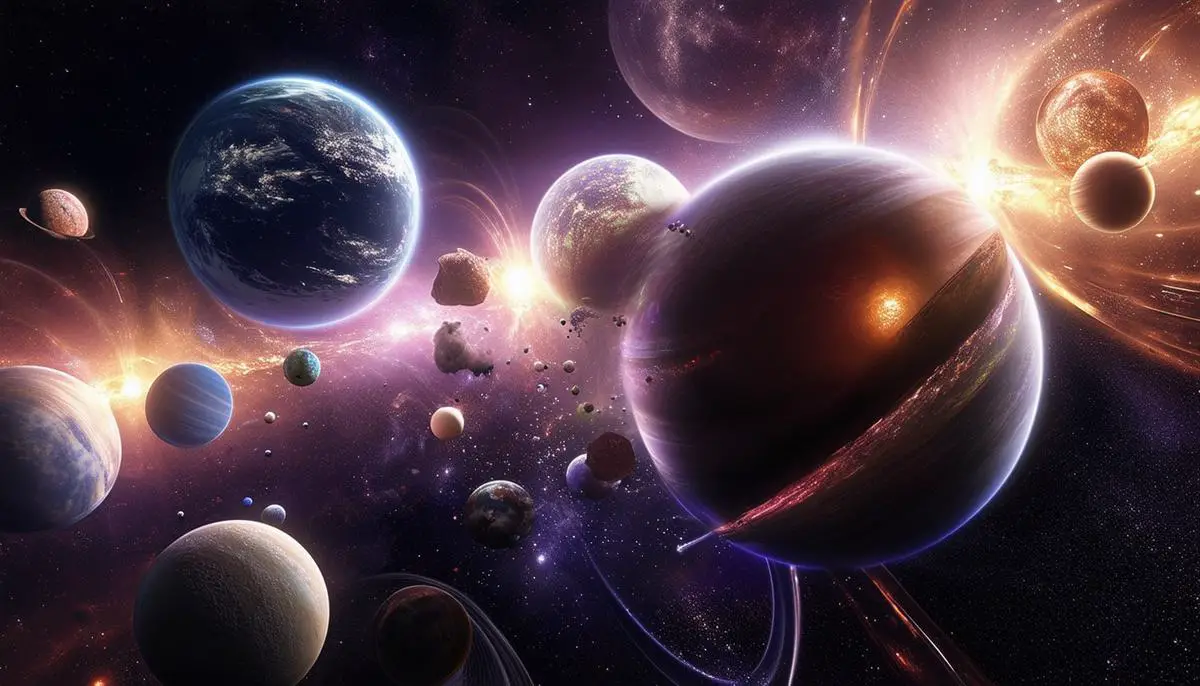
Impact and Reception
The widespread reception of 'Cosmos: A Spacetime Odyssey' underscores its impactful resonance with both viewers and critics, encapsulating a significant stride advancing scientific literacy and enthusiasm. Its debut reinvigorated Carl Sagan's renowned blend of inspirational science communication and expanded its reach into new generations and diverse audiences.
Audience engagement with the modern 'Cosmos' proved substantial from the outset, receiving commendable viewership numbers that highlighted an eager public interest in cosmic education delivered through a contemporary lens. Central to its appeal has been the series' ability to merge wonder with scientific integrity, making complex ideas about the universe accessible and engaging.
Critical reviews have been widely positive, pointing particularly to Neil deGrasse Tyson's compelling narration and the exceptional visual effects that transform astronomical concepts into mesmerizing visual experiences. Critics have praised the show for its rigorous adherence to scientific accuracy while successfully making the content palatable for non-experts.
The portrayal of historical sequences and stories of lesser-known scientists contributed significantly to the series' educational value. This narrative technique embellishes the historical dimension of scientific discovery and enhances viewers' appreciation for the context and collaborative nature of these advancements.
The series has played a notable role in promoting scientific literacy among a wider populace. By integrating problem-solving approaches and fostering a question-centric attitude towards natural phenomena, 'Cosmos' extends its educational footprint beyond passive viewing to inspiring active, analytical engagement with the natural world.
In its mission to captivate and educate, 'Cosmos: A Spacetime Odyssey' has impressively followed the tradition of its predecessor while expanding its legacy through cutting-edge technology and storytelling finesse. It demonstrates that profound scientific truths can be shared widely with authenticity and enthusiasm, continuing Carl Sagan's dream of a scientifically literate world, attuned to and inspired by the grand story of the universe.
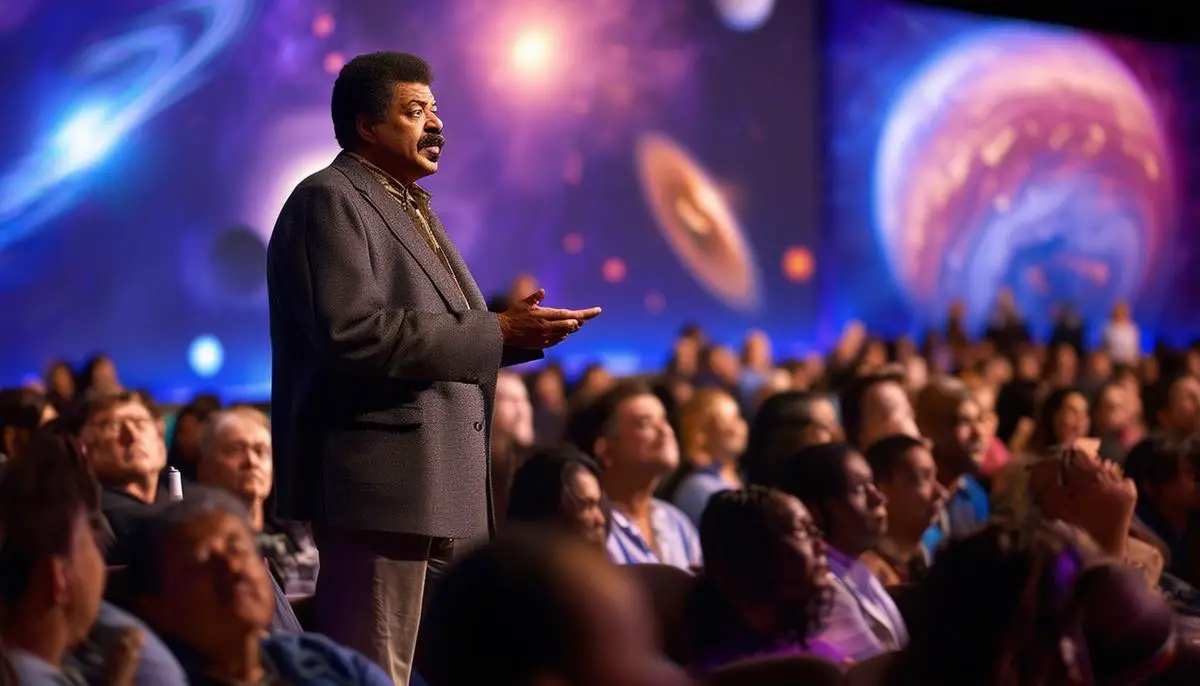
Neil deGrasse Tyson's Role
Neil deGrasse Tyson's contribution to 'Cosmos: A Spacetime Odyssey' is multifold: he is the charismatic host, lending his resonant voice and screen presence, and an advisor who innately bridges complex astrophysical discussion and broad public engagement. His narrative delivery makes abstruse scientific theories comprehensible and depicts elaborate phenomena in a manner that enthralls academics and laymen alike. Holding a long-established reputation as a passionate advocate for public science education, Tyson's participation in the series affirms his commitment to inspiring a wider demographic to embrace the scientific lens.
As an astrophysicist, Tyson's insights are crucial in selecting content that reflects the most current understanding of the universe while ensuring these are grounded in rigorous scientific principles. His perspective doesn't merely report on discoveries; it contextualizes them within a broader story—what these discoveries mean for humankind, their implications for future research, and their metaphysical beauty.
Few can match Tyson's unique ability to transcend the traditional barriers that have relegated astrophysics to compartments of academia. Rooted in deep knowledge but aware of communal curiosity, Tyson guides viewers effortlessly from earthbound concerns to cosmic phenomena, converting observers into participants in an expanding universe. His analogies and references draw from a mix of historical contexts, literature, and pop culture—ensuring the content resonates with a myriad of cultural backgrounds.
Tyson extends his role beyond the presentation of facts. He enacts a mentorship role reminiscent of that performed by Carl Sagan for him. By integrating personal stories—like his memorable snowy encounter as a seventeen-year-old with Sagan—Tyson invokes the emotional landscape of scientific pursuit, which Sagan himself championed. These human elements peppered throughout the series, transform cosmic voyaging into heartfelt storytelling, reminding viewers of their mortal part in the celestial landscape and how exploration transcends generational boundaries.
Educational Outreach
As 'Cosmos: A Spacetime Odyssey' redefines the boundaries between academic content and global media, its value extends vigorously into educational arenas. The series has captivated a broad audience and seeped dynamically into the fabric of educational reform. It serves as an excellent model for how scientific knowledge can be presented in the classroom—engaging, contextual, and thought-provoking.
Educational settings, from elementary schools to universities, have adopted 'Cosmos' as a potent teaching aid. Episodes are frequently used to supplement curriculum contents, offering students vivid portrayals of complex scientific concepts and historical scientific developments. The sense of wonder instilled by the show encourages inquiry-based learning approaches, where students are prompted to ask questions and engage deeply with the material presented.
Neil deGrasse Tyson's approachable narration and the visually compelling content make 'Cosmos' an invaluable tool in overcoming the intimidation students often feel towards STEM disciplines. Beyond just presenting scientific facts, the series fosters a narrative understanding of science—how scientific knowledge is built, revised, and expanded upon. This narrative approach helps demystify science as a static field of hard truths, instead introducing it as an evolving, rigorous discipline shaped by human curiosity and creativity—attributes that students can relate to and find inspiration in.
'Cosmos: A Spacetime Odyssey' taps into the digital era's potential to revolutionize education through various interactive features, such as the Cosmic Calendar. This tool brings a gamification element to learning, allowing students to explore the timeline of the universe at different scales and from multiple perspectives, thereby enhancing both engagement and retention.
The impact of 'Cosmos' on inspiring future scientists cannot be overstated. Through its reimagined 'Ship of Imagination,' the series traverses literal cosmic landscapes and the personal intellectual landscapes of budding scientists across the globe. For many young viewers, Tyson's inclusive narrative and the portrayal of science as a boundless realm of possibilities plant the seeds for futures in research and science advocacy.
In essence, 'Cosmos: A Spacetime Odyssey' does more than just disseminate knowledge; it transforms how we perceive and teach science. As a bridge between academic documentation and charismatic narrative, it rebuilds the historical and futuristic continua of science in a framework that is readily accessible and enormously enriching.
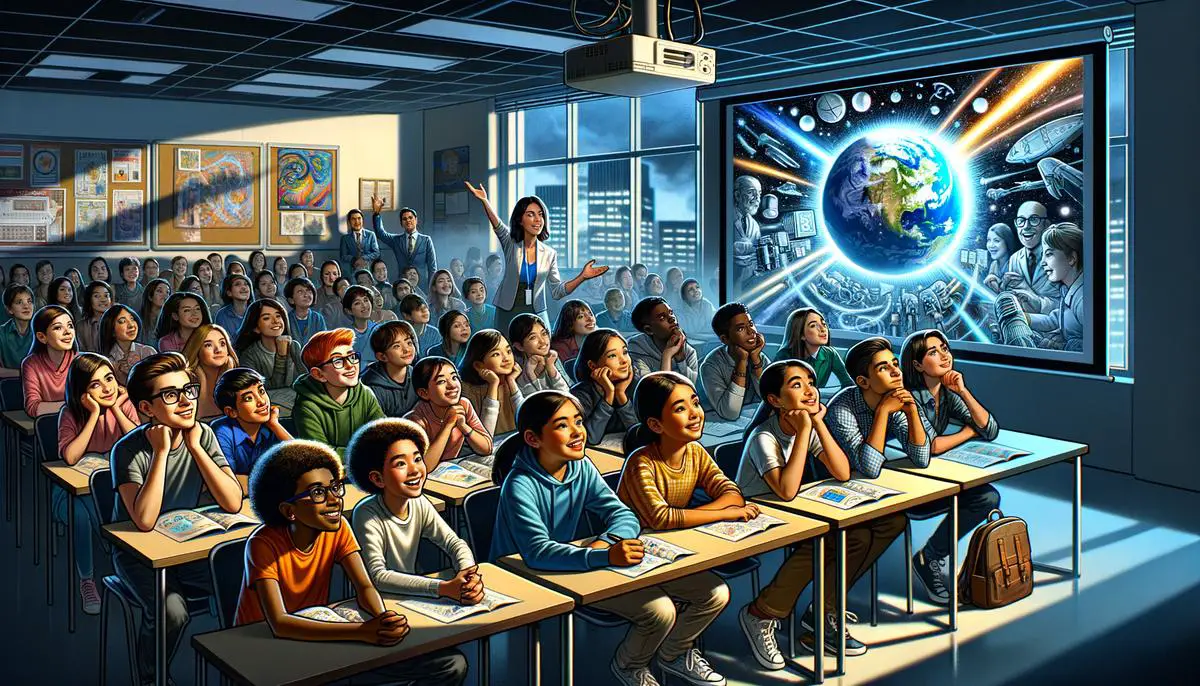
In essence, 'Cosmos: A Spacetime Odyssey' transcends its role as a mere educational program by weaving complex scientific truths into the fabric of everyday understanding. This series illuminates the cosmos through its sophisticated visual and narrative approach and rekindles the collective curiosity about our place in the universe, continuing Carl Sagan's legacy of inspiring awe and wonder through scientific exploration.
- Tyson ND. Cosmos: A Spacetime Odyssey [Television series]. Cosmos Studios; Fuzzy Door Productions; 2014.
- Sagan C. Cosmos: A Personal Voyage [Television series]. Public Broadcasting Service (PBS); 1980.
- Tyson ND, Druyan A, Soter S. The Cosmic Perspective. 9th ed. Pearson; 2021.
![]()
